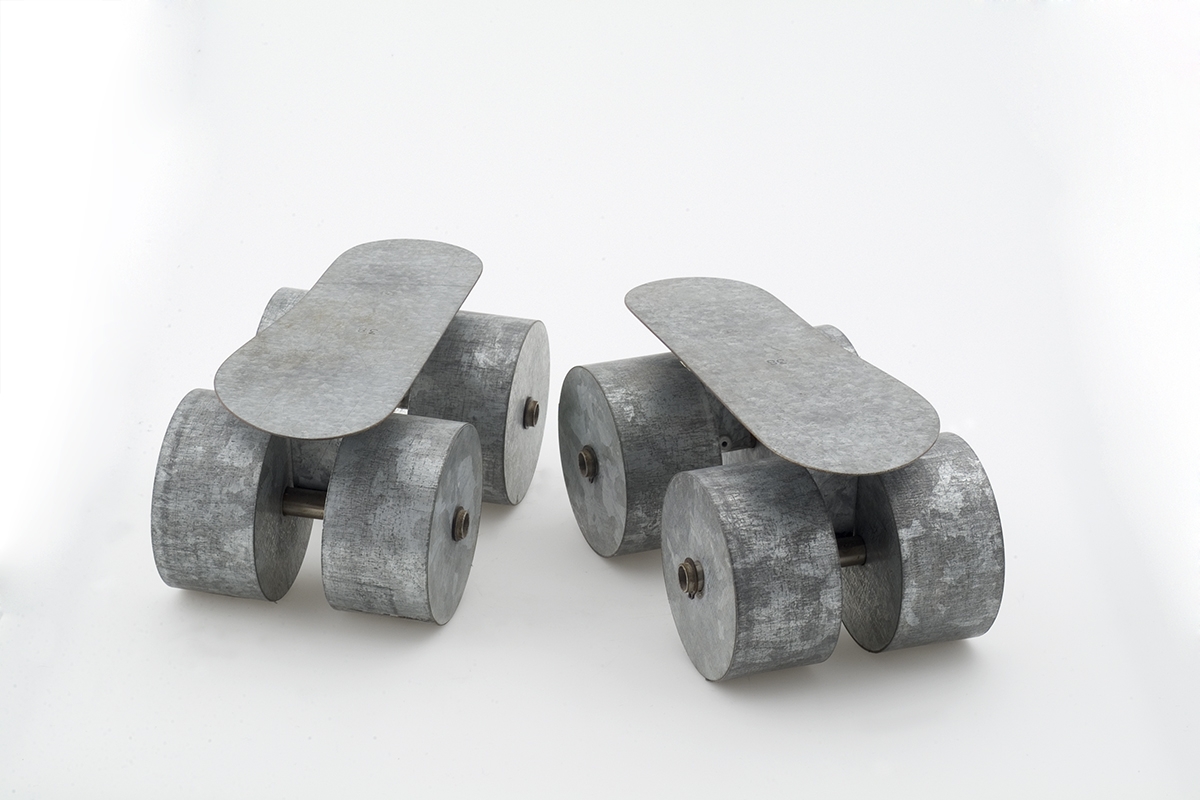
Pattini a rotelle nº38 (Private collection, Rome)
Photo © Alessandro Zanbianchi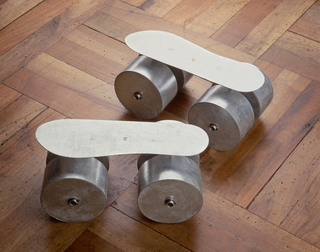
Pattini a rotelle nº45 (Private collection, Turin)
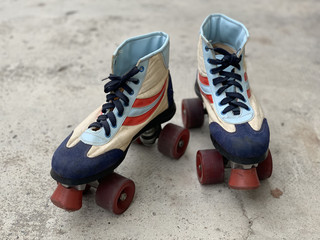
The origin of roller skates is unknown.
The first date related to roller skates that can be remembered is 1743, the year in which they made their very first appearance during a performance on a London stage.
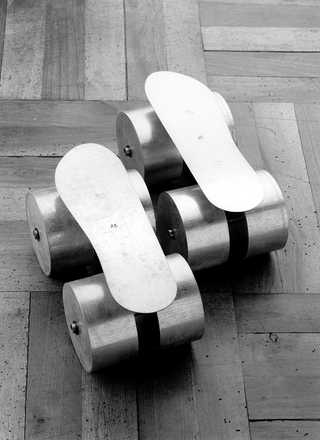
Pattini a rotelle nº45 (Private collection, Turin)
Photo © Studio Blu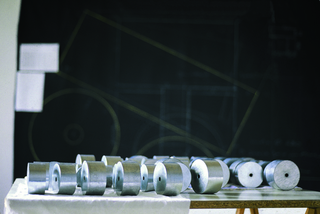
Studio of Umberto Cavenago at Castello di Rivara in 1989
Photo © Nadia Ponci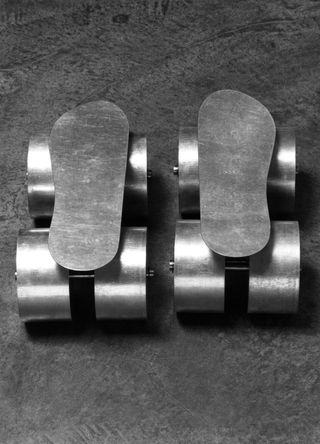
Pattini a rotelle nº45 (Private collection, Turin)
Photo © Studio Blu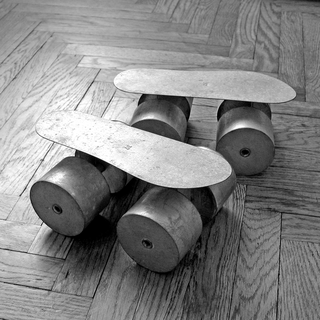
Pattini a rotelle nº37 (Private collection)
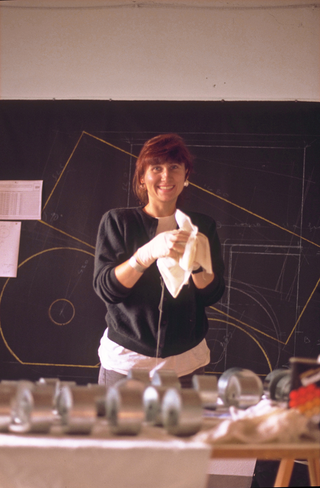
Nadia Ponci in the studio of Umberto Cavenago at Castello di Rivara in 1989
Social
Contatti
umberto@cavenago.info